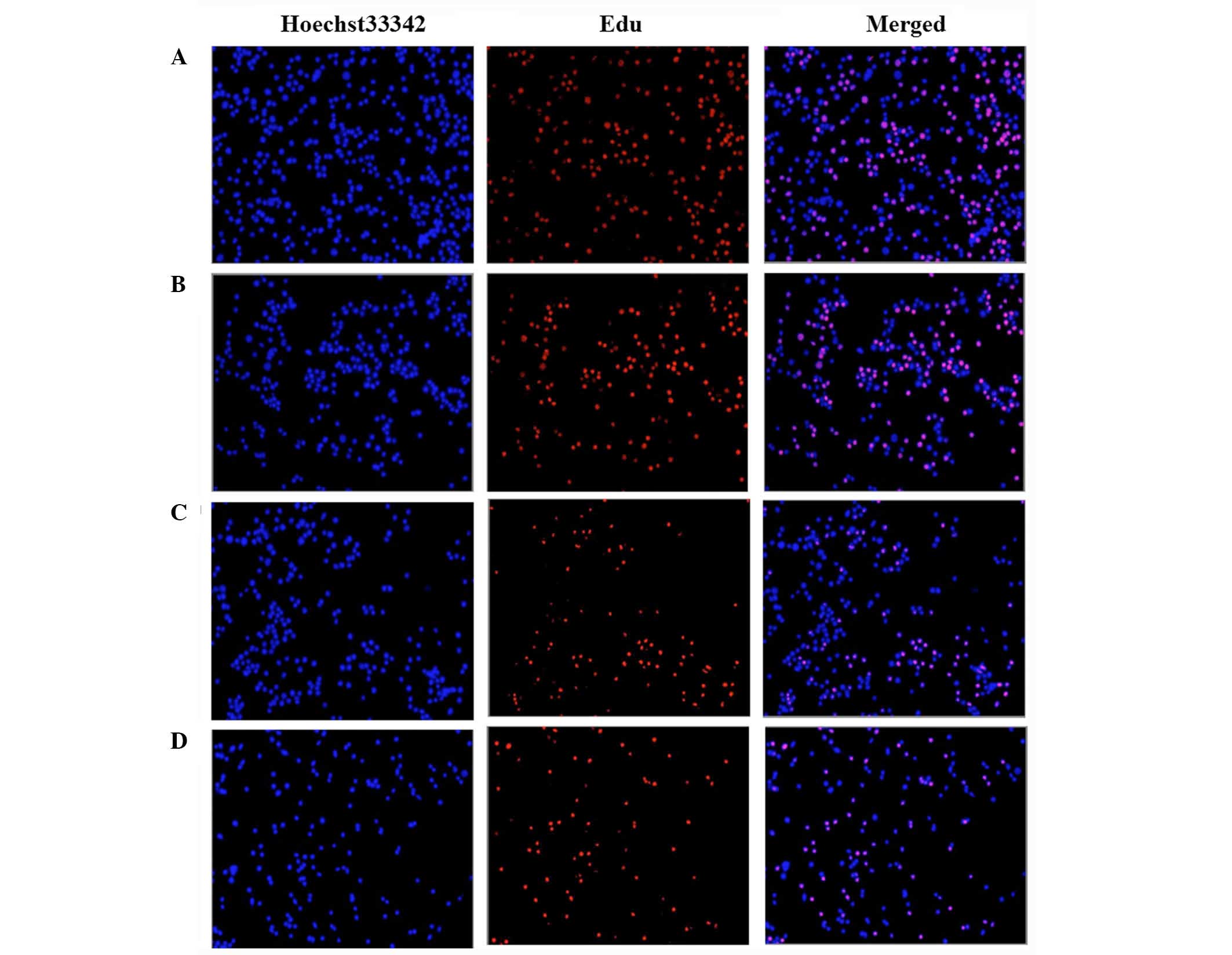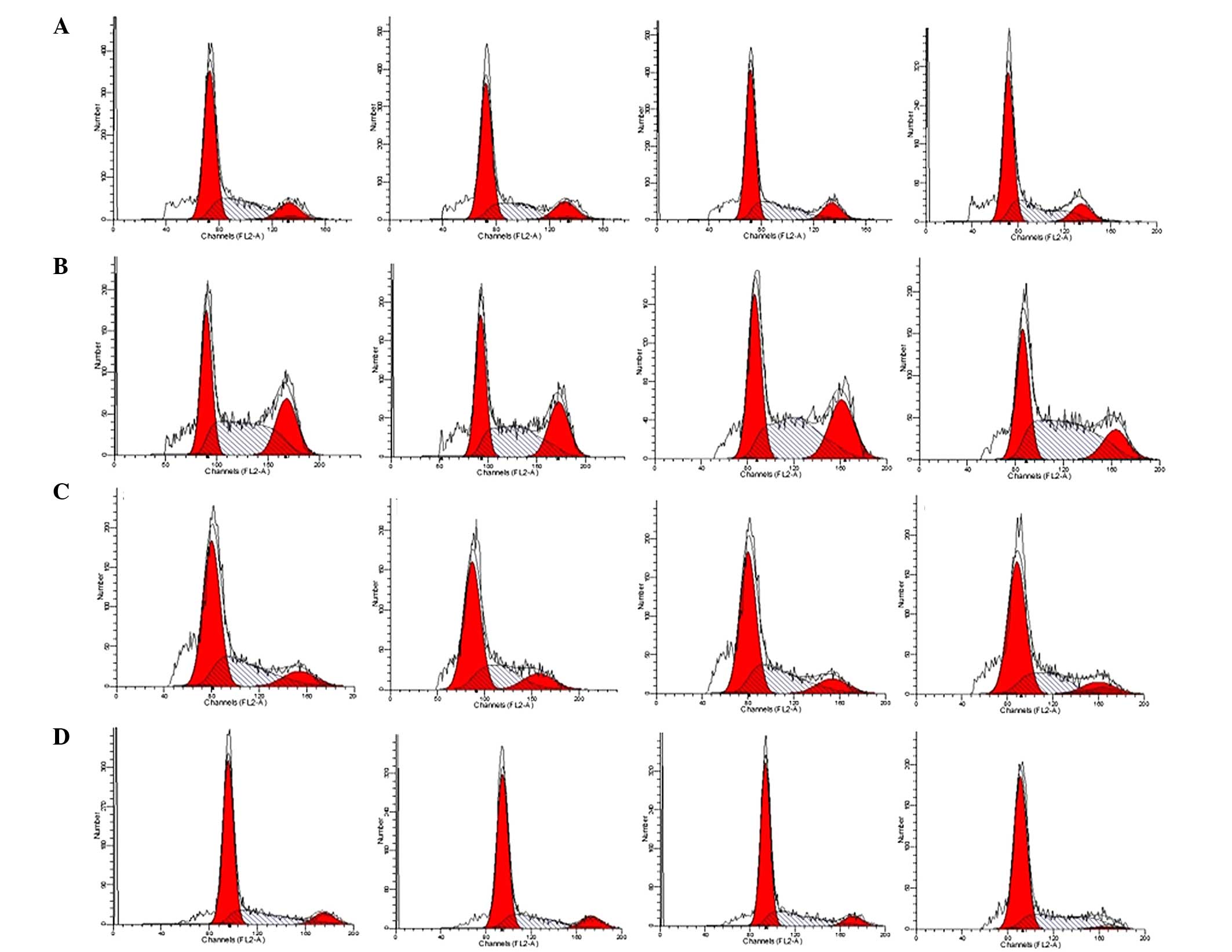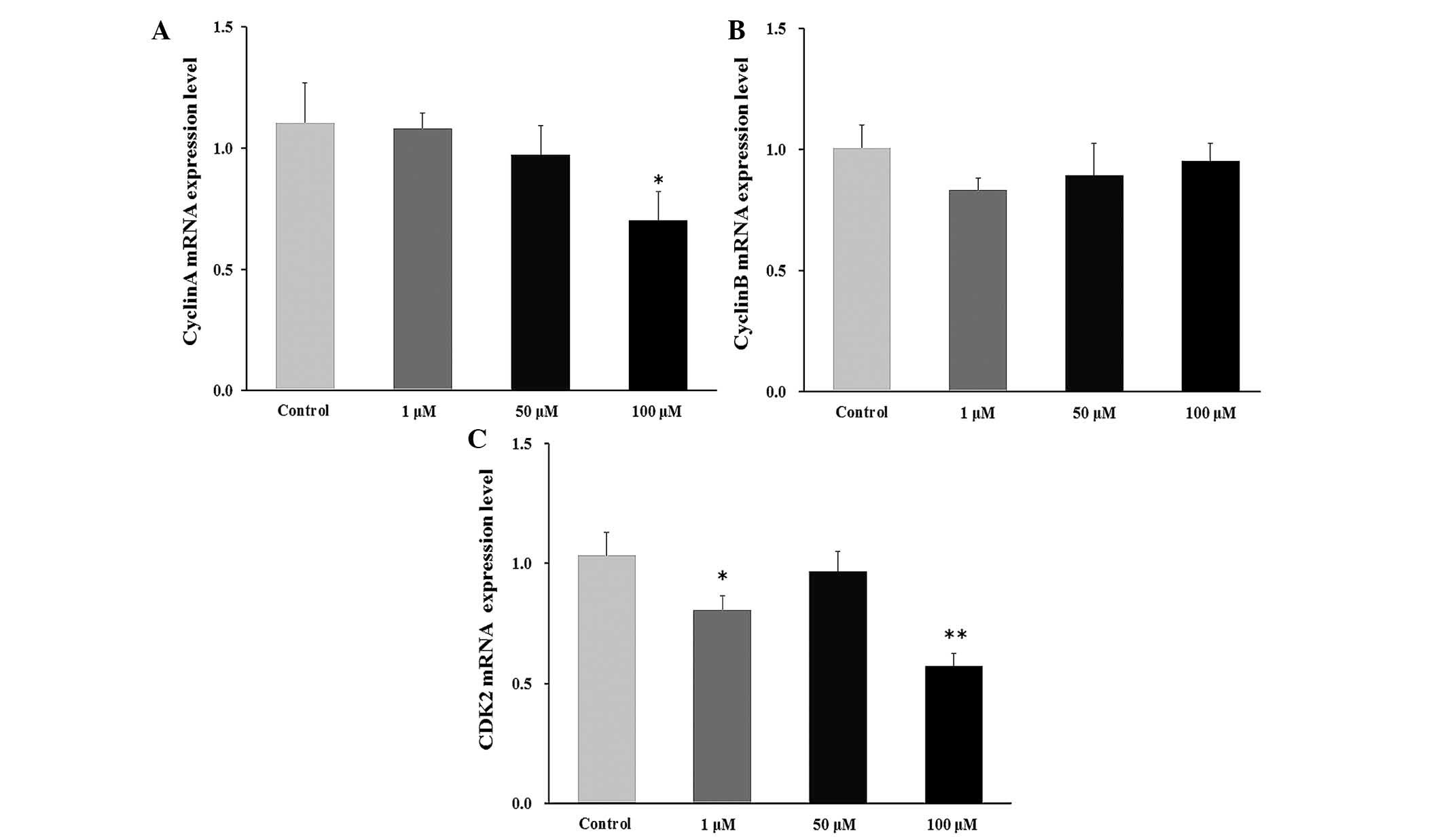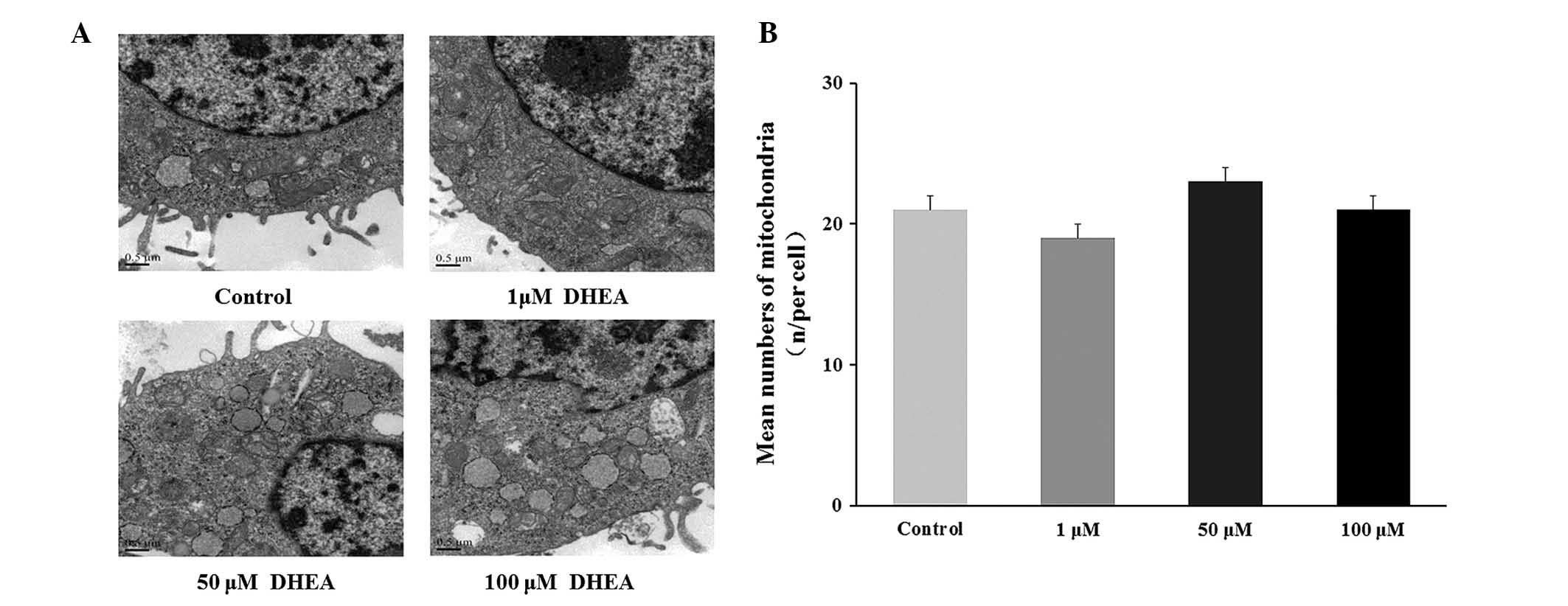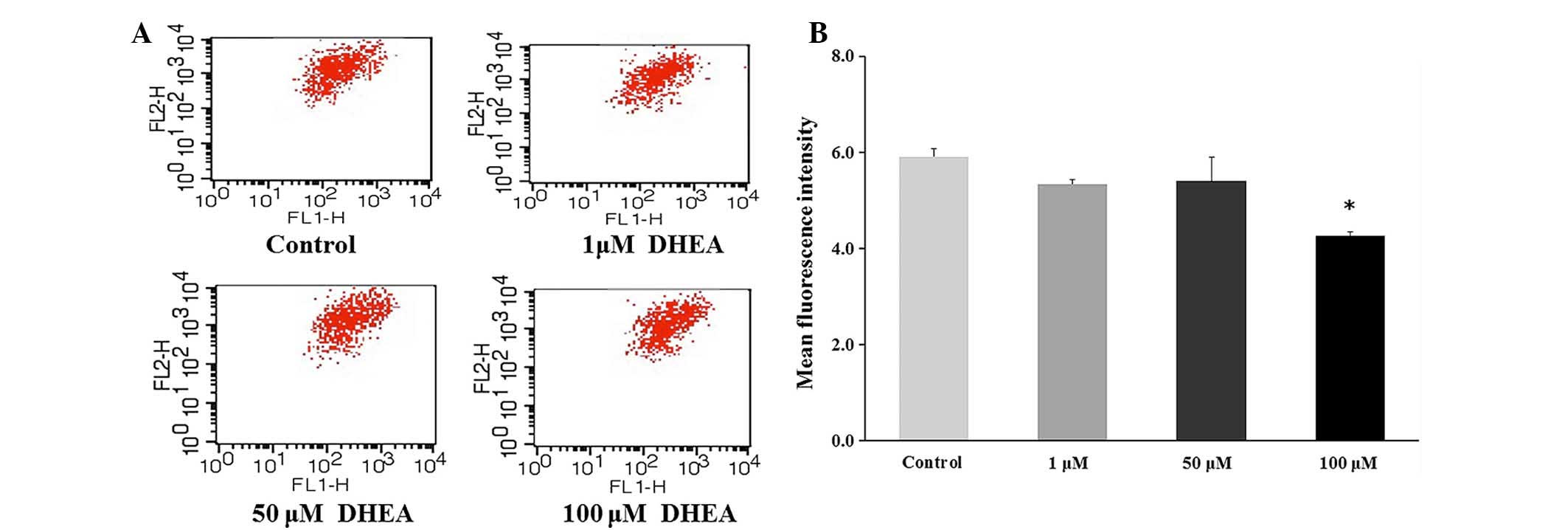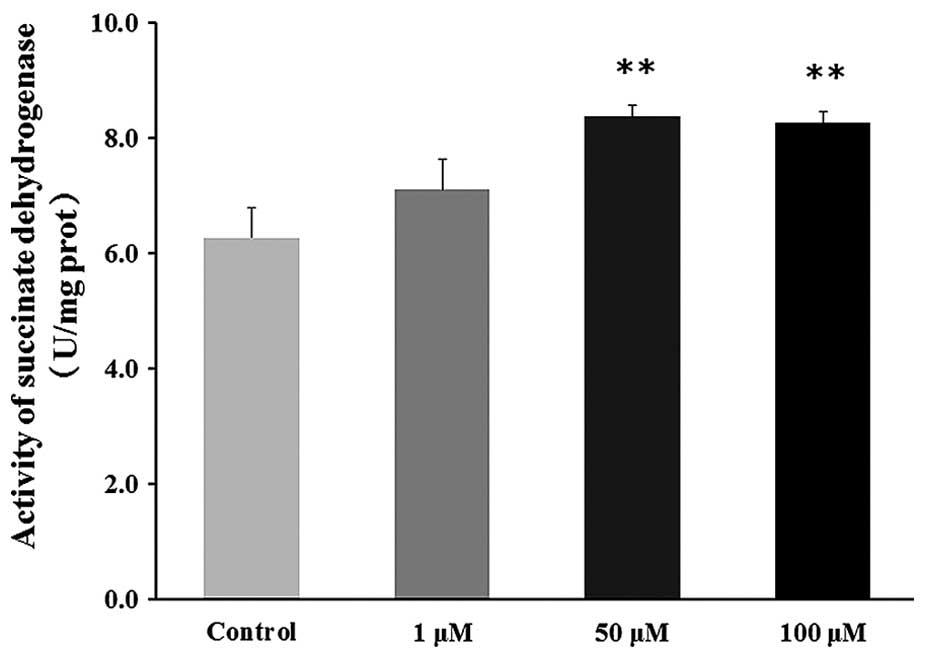|
1
|
Savineau JP, Mathan R and Dumas de la
Roque E: Role of DHEA in cardiovascular diseases. Biochem
Pharmacol. 85:718–726. 2013. View Article : Google Scholar
|
|
2
|
Sato K, Iemitsu M, Aizawa K, Mesaki N,
Ajisaka R and Fujita S: DHEA administration and exercise training
improves insulin resistance in obese rats. Nutr Metab (Lond).
9:472012. View Article : Google Scholar
|
|
3
|
Arnold JT, Gray NE, Jacobowitz K,
Viswanathan L, Cheung PW, McFann KK, Le H and Blackman MR: Human
prostate stromal cells stimulate increased PSA production in
DHEA-treated prostate cancer epithelial cells. J Steroid Biochem
Mol Biol. 111:240–246. 2008. View Article : Google Scholar : PubMed/NCBI
|
|
4
|
Kurita H, Maeshima H, Kida S, Matsuzaka H,
Shimano T, Nakano Y, Baba H, Suzuki T and Arai H: Serum
dehydroepiandrosterone (DHEA) and DHEA-sulfate (S) levels in
medicated patients with major depressive disorder compared with
controls. J Affect Disord. 146:205–212. 2013. View Article : Google Scholar
|
|
5
|
Legrain S and Girard L: Pharmacology and
therapeutic effects of dehydroepiandrosterone in older subjects.
Drugs Aging. 20:949–967. 2003. View Article : Google Scholar : PubMed/NCBI
|
|
6
|
Schwartz AG and Pashko LL:
Dehydroepiandrosterone, glucose-6-phosphate dehydrogenase and
longevity. Ageing Res Rev. 3:171–187. 2004. View Article : Google Scholar : PubMed/NCBI
|
|
7
|
Labrie F, Bélanger A, Bélanger P, Bérubé
R, Martel C, Cusan L, Gomez J, Candas B, Chaussade V, Castiel I, et
al: Metabolism of DHEA in postmenopausal women following
percutaneous administration. J Steroid Biochem Mol Biol.
103:178–188. 2007. View Article : Google Scholar
|
|
8
|
Song L, Tang X, Kong Y, Ma H and Zou S:
The expression of serum steroid sex hormones and steroidogenic
enzymes following intraperitoneal administration of
dehydroepiandrosterone (DHEA) in male rats. Steroids. 75:213–218.
2010. View Article : Google Scholar
|
|
9
|
Baulieu EE, Thomas G, Legrain S, Lahlou N,
Roger M, Debuire B, Faucounau V, Girard L, Hervy MP, Latour F, et
al: Dehydroepiandrosterone (DHEA), DHEA sulfate and aging:
Contribution of the DHEAge Study to a sociobiomedical issue. Proc
Natl Acad Sci USA. 97:4279–4284. 2000. View Article : Google Scholar
|
|
10
|
Dashtaki R, Whorton AR, Murphy TM, Chitano
P, Reed W and Kennedy TP: Dehydroepiandrosterone and analogs
inhibit DNA binding of AP-1 and airway smooth muscle proliferation.
J Pharmacol Exp Ther. 285:876–883. 1998.PubMed/NCBI
|
|
11
|
Di Monaco M, Pizzini A, Gatto V, Leonardi
L, Gallo M, Brignardello E and Boccuzzi G: Role of
glucose-6-phosphate dehydrogenase inhibition in the
antiproliferative effects of dehydroepiandrosterone on human breast
cancer cells. Brit J Cancer. 75:589–592. 1997. View Article : Google Scholar : PubMed/NCBI
|
|
12
|
Yang NC, Jeng KC, Ho WM and Hu ML: ATP
depletion is an important factor in DHEA-induced growth inhibition
and apoptosis in BV-2 cells. Life Sci. 70:1979–1988. 2002.
View Article : Google Scholar : PubMed/NCBI
|
|
13
|
Rice SP, Zhang L, Grennan-Jones F, Agarwal
N, Lewis MD, Rees DA and Ludgate M: Dehydroepiandrosterone (DHEA)
treatment in vitro inhibits adipogenesis in human omental but not
subcutaneous adipose tissue. Mol Cell Endocrinol. 320:51–57. 2010.
View Article : Google Scholar : PubMed/NCBI
|
|
14
|
Zapata E, Ventura JL, De la Cruz K,
Rodriguez E, Damián P, Massó F, Montaño LF and López-Marure R:
Dehydroepiandrosterone inhibits the proliferation of human
umbilical vein endothelial cells by enhancing the expression of p53
and p21, restricting the phosphorylation of retinoblastoma protein,
and is androgen-and estrogen-receptor independent. FEBS J.
272:1343–1353. 2005. View Article : Google Scholar : PubMed/NCBI
|
|
15
|
Correa F, Garcı́a N, Garcı́a G and Chávez
E: Dehydroepiandrosterone as an inducer of mitochondrial
permeability transition. J Steroid Biochem Mol Biol. 87:279–284.
2003. View Article : Google Scholar : PubMed/NCBI
|
|
16
|
Murugesan P, Muthusamy T, Balasubramanian
K and Arunakaran J: Polychlorinated biphenyl (Aroclor 1254)
inhibits testosterone biosynthesis and antioxidant enzymes in
cultured rat Leydig cells. Reprod Toxicol. 25:447–454. 2008.
View Article : Google Scholar : PubMed/NCBI
|
|
17
|
Aldred LF and Cooke BA: The effect of cell
damage on the density and steroidogenic capacity of rat testis
Leydig cells, using an NADH exclusion test for determination of
viability. J Steroid Biochem. 18:411–414. 1983. View Article : Google Scholar : PubMed/NCBI
|
|
18
|
Livak KJ and Schmittgen TD: Analysis of
relative gene expression data using real-time quantitative PCR and
the 2(−Delta Delta C(T)) method. Methods. 25:402–408. 2001.
View Article : Google Scholar
|
|
19
|
Shen X, Liu L, Yin F, Ma H and Zou S:
Effect of dehydroepiandrosterone on cell growth and mitochondrial
function in TM-3 cells. Gen Comp Endocrinol. 177:177–186. 2012.
View Article : Google Scholar : PubMed/NCBI
|
|
20
|
Tang X, Ma H, Huang G, Miao J and Zou S:
The effect of dehydroepiandrosterone on lipogenic gene mRNA
expression in cultured primary chicken hepatocytes. Eur J Lipid Sci
Tech. 111:432–441. 2009. View Article : Google Scholar
|
|
21
|
Dickson GR: Practical Methods in Electron
Microscopy. Volume 3, part 1. Fixation, Dehydration and Embedding
of Biological Specimens. J Anat. 124(Part 2)1977.
|
|
22
|
Suzuki M, Wright LS, Marwah P, Lardy HA
and Svendsen CN: Mitotic and neurogenic effects of
dehydroepiandrosterone (DHEA) on human neural stem cell cultures
derived from the fetal cortex. Proc Natl Acad Sci USA.
101:3202–3207. 2004. View Article : Google Scholar : PubMed/NCBI
|
|
23
|
Sicard F, Ehrhart-Bornstein M, Corbeil D,
Sperber S, Krug AW, Ziegler CG, Rettori V, McCann SM and Bornstein
SR: Age-dependent regulation of chromaffin cell proliferation by
growth factors, dehydroepiandrosterone (DHEA), and DHEA sulfate.
Proc Natl Acad Sci USA. 104:2007–2012. 2007. View Article : Google Scholar : PubMed/NCBI
|
|
24
|
Diermeier-Daucher S, Clarke ST, Hill D,
Vollmann-Zwerenz A, Bradford JA and Brockhoff G: Cell type specific
applicability of 5-ethynyl-2′-deoxyuridine (EdU) for dynamic
proliferation assessment in flow cytometry. Cytometry A.
75:535–546. 2009. View Article : Google Scholar : PubMed/NCBI
|
|
25
|
Kotogány E, Dudits D, Horváth GV and
Ayaydin F: A rapid and robust assay for detection of S-phase cell
cycle progression in plant cells and tissues by using ethynyl
deoxyuridine. Plant Methods. 6:52010. View Article : Google Scholar : PubMed/NCBI
|
|
26
|
Salic A and Mitchison TJ: A chemical
method for fast and sensitive detection of DNA synthesis in vivo.
Proc Natl Acad Sci USA. 105:2415–2420. 2008. View Article : Google Scholar : PubMed/NCBI
|
|
27
|
Warren M, Puskarczyk K and Chapman SC:
Chick embryo proliferation studies using EdU labeling. Dev Dyn.
238:944–949. 2009. View Article : Google Scholar : PubMed/NCBI
|
|
28
|
Chehrehasa F, Meedeniya AC, Dwyer P,
Abrahamsen G and Mackay-Sim A: EdU, a new thymidine analogue for
labelling proliferating cells in the nervous system. J Neurosci
Methods. 177:122–130. 2009. View Article : Google Scholar
|
|
29
|
Yu Y, Arora A, Min W, Roifman CM and
Grunebaum E: EdU incorporation is an alternative non-radioactive
assay to (3)H thymidine uptake for in vitro measurement of mice
T-cell proliferations. J Immunol Methods. 350:29–35. 2009.
View Article : Google Scholar : PubMed/NCBI
|
|
30
|
Arnold JT, Liu X, Allen JD, Le H, McFann
KK and Blackman MR: Androgen receptor or estrogen receptor-beta
blockade alters DHEA-, DHT- and E2 -induced
proliferation and PSA production in human prostate cancer cells.
Prostate. 67:1152–1162. 2007. View Article : Google Scholar : PubMed/NCBI
|
|
31
|
Girón RA, Montaño LF, Escobar ML and
López-Marure R: Dehydroepiandrosterone inhibits the proliferation
and induces the death of HPV-positive and HPV-negative cervical
cancer cells through an androgen-and estrogen-receptor independent
mechanism. FEBS J. 276:5598–5609. 2009. View Article : Google Scholar
|
|
32
|
Ho HY, Cheng ML, Chiu HY, Weng SF and Chiu
DT: Dehydroepiandrosterone induces growth arrest of hepatoma cells
via alteration of mitochondrial gene expression and function. Int J
Oncol. 33:969–977. 2008.PubMed/NCBI
|
|
33
|
López-Marure R, Contreras PG and Dillon
JS: Effects of dehydroepiandrosterone on proliferation, migration,
and death of breast cancer cells. Eur J Pharmacol. 660:268–274.
2011. View Article : Google Scholar : PubMed/NCBI
|
|
34
|
Toth-Fejel S, Cheek J, Calhoun K, Muller P
and Pommier RF: Estrogen and androgen receptors as comediators of
breast cancer cell proliferation: Providing a new therapeutic tool.
Arch Surg. 139:50–54. 2004. View Article : Google Scholar : PubMed/NCBI
|
|
35
|
Kumar V, Balomajumder C and Roy P:
Disruption of LH-induced testosterone biosynthesis in testicular
Leydig cells by triclosan: Probable mechanism of action.
Toxicology. 250:124–131. 2008. View Article : Google Scholar : PubMed/NCBI
|
|
36
|
Han YH, Kim SZ, Kim SH and Park WH:
Arsenic trioxide inhibits the growth of Calu-6 cells via inducing a
G2 arrest of the cell cycle and apoptosis accompanied with the
depletion of GSH. Cancer Lett. 270:40–55. 2008. View Article : Google Scholar : PubMed/NCBI
|
|
37
|
Gebäck T, Schulz MMP, Koumoutsakos P and
Detmar M: TScratch: A novel and simple software tool for automated
analysis of monolayer wound healing assays. Biotechniques.
46:265–274. 2009.PubMed/NCBI
|
|
38
|
Yang NC, Jeng KC, Ho WM, Chou SJ and Hu
ML: DHEA inhibits cell growth and induces apoptosis in BV-2 cells
and the effects are inversely associated with glucose concentration
in the medium. J Steroid Biochem Mol Biol. 75:159–166. 2000.
View Article : Google Scholar
|
|
39
|
Bellei M, Battelli D, Fornieri C, Mori G,
Muscatello U, Lardy H and Bobyleva V: Changes in liver structure
and function after short-term and long-term treatment of rats with
dehydroepiandrosterone. J Nutr. 122:967–976. 1992.PubMed/NCBI
|
|
40
|
Bernas T and Dobrucki J: Mitochondrial and
nonmitochondrial reduction of MTT: Interaction of MTT with TMRE,
JC-1 and NAO mitochondrial fluorescent probes. Cytometry.
47:236–242. 2002. View Article : Google Scholar : PubMed/NCBI
|
|
41
|
Swierczynski J and Mayer D:
Dehydroepiandrosterone-induced lipid peroxidation in rat liver
mitochondria. J Steroid Biochem Mol Biol. 58:599–603. 1996.
View Article : Google Scholar : PubMed/NCBI
|
|
42
|
Maciel EN, Vercesi AE and Castilho RF:
Oxidative stress in Ca (2+)-induced membrane permeability
transition in brain mitochondria. J Neurochem. 79:1237–1245. 2001.
View Article : Google Scholar : PubMed/NCBI
|
|
43
|
Safiulina D, Peet N, Seppet E, Zharkovsky
A and Kaasik A: Dehydroepiandrosterone inhibits complex I of the
mitochondrial respiratory chain and is neurotoxic in vitro and in
vivo at high concentrations. Toxicol Sci. 93:348–356. 2006.
View Article : Google Scholar : PubMed/NCBI
|
|
44
|
Sato K, Iemitsu M, Aizawa K and Ajisaka R:
Testosterone and DHEA activate the glucose metabolism-related
signaling pathway in skeletal muscle. Am J Physiol Endocrinol
Metab. 294:E961–E968. 2008. View Article : Google Scholar : PubMed/NCBI
|
|
45
|
Jahn MP, Jacob MH, Gomes LF, Duarte R,
Araújo AS, Belló-Klein A, Ribeiro MF and Kucharski LC: The effect
of long-term DHEA treatment on glucose metabolism, hydrogen
peroxide and thioredoxin levels in the skeletal muscle of diabetic
rats. J Steroid Biochem Mol Biol. 120:38–44. 2010. View Article : Google Scholar : PubMed/NCBI
|
















